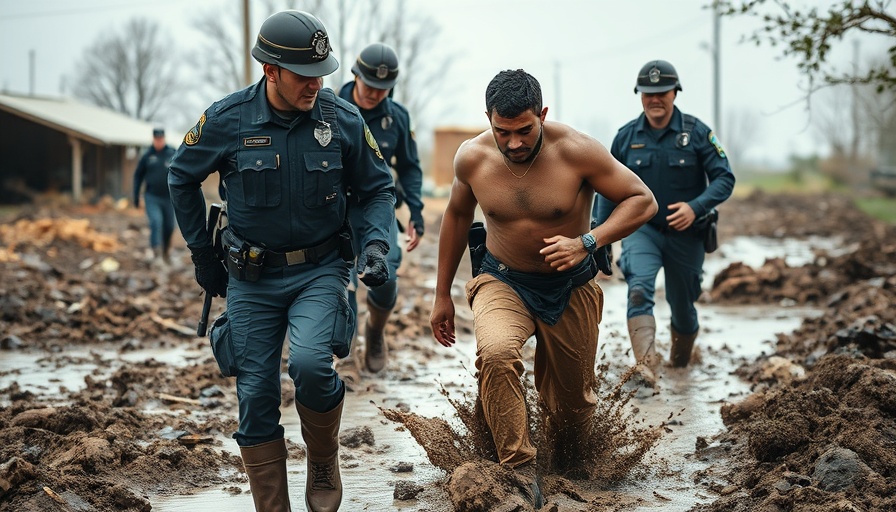
Motor Vehicle Pursuits: A Closer Look at Police Protocol
Pursuant to the gripping incident in Waterbury, Connecticut, where police officers effectively halted a fleeing suspect driving a stolen box truck, we gain a further understanding of police pursuit methodologies. Procedures that involve using stop sticks and coordinated police efforts underscore the continued challenges law enforcement faces in controlling pursuits effectively and safely. In instances like the truck pursuit seen on April 23, officers employed established tactics that include tire deflation mechanisms—an essential technique aimed at minimizing risk to bystanders while escalating the urgency of the operation.
Outcomes of Pursuits: Analyzing Dante Walton’s Arrest
Following the pursuit that culminated in a multi-vehicle crash, the arrest of Dante Walton demonstrates not just the implications of resisting arrest, but also the myriad charges tied to such actions—from larceny to assault on a police officer. His case serves as a stark reminder of the real-world consequences that ensue from police encounters, an aspect that both the community and law enforcement must reconcile. As Walton awaits his court date with a substantial bail, conversations arise around police accountability and community safety.
The Role of Body-Worn Cameras in Modern Policing
In an era where transparency is paramount, body-worn cameras (BWC) have become indispensable tools for law enforcement agencies. This incident was documented through dash and BWC footage, enabling a level of accountability that can aid in both public trust and internal evaluations of police conduct. The release of recorded materials on social media platforms like Instagram not only showcases the active role departments are taking in ensuring community awareness but also serves as a pivotal learning tool for ongoing police training and reform discussions.
Tech Innovations and Future Strategies in Police Pursuits
The incorporation of technology, such as AI analytics and enhanced surveillance systems, is reshaping the landscape of public safety. Such tools allow for more strategic planning and execution during high-stakes situations like vehicle pursuits. As agencies across the nation face pressures to modernize their approaches, Waterbury's incident emphasizes the need to evaluate and expand police operations not just tactically, but technologically, promoting a thoughtful integration of new tools for improved officer safety and community relations.
Training and Preparedness: Direct Lessons from Waterbury
The recent pursuit incident brings to light the critical importance of police training protocols. Efforts to ensure that officers engage in realistic training scenarios can dramatically influence outcomes during real-life pursuits. Furthermore, discussions about mental health and wellness programs are pivotal in preparing officers to manage stress effectively and maintain composure in critical moments—ensuring that actions taken during events like these reflect both professionalism and community respect.
Analyzing the Aftermath: Implications for Law Enforcement Agencies
The ramifications of high-profile police pursuits extend beyond the immediate incident itself, prompting crucial questions about law enforcement policies and community engagement. As incidents like Walton's reveal, public sentiment can sway significantly towards the need for enhanced policies regarding vehicular pursuits, particularly concerning civilian safety and officer risk. Engaging all stakeholders—from policymakers to community leaders—will be vital in cultivating a balanced and informed approach moving forward.
The Waterbury incident evokes a blend of concerns and insights that cut across comprehensive themes in public safety and law enforcement accountability. As we dissect this single event, it becomes clear that the road ahead requires cooperation, technological advancement, and an unwavering commitment to the community.
 Add Row
Add Row  Add
Add 

 Add Element
Add Element  Add Row
Add Row 




Write A Comment